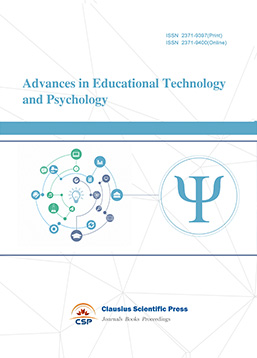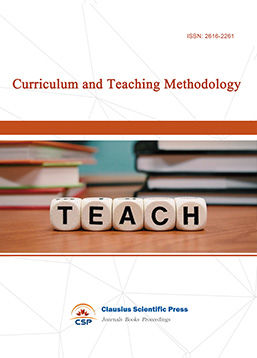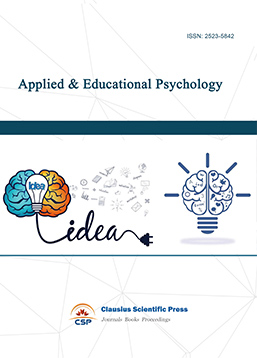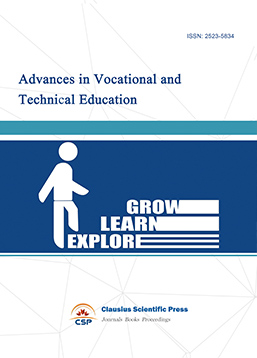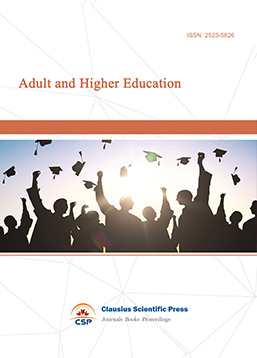Optimization Algorithm of Fuzzy Index Evaluation System of Ideological and Political Teaching in Course Based on Human-Computer Interaction Emotion Recognition
DOI: 10.23977/trance.2024.060623 | Downloads: 18 | Views: 796
Author(s)
Zheqing Tang 1
Affiliation(s)
1 Information Engineering College, Heilongjiang Polytechnic, Harbin, Heilongjiang Province, China
Corresponding Author
Zheqing TangABSTRACT
Teaching reform is ultimately achieved through teachers' course teaching. Only in the process of curriculum teaching implementation can the superior teaching resources such as excellent courses be transformed into students' own knowledge, ability and skills, and the teaching mode and the value of excellent courses can be reflected in the students. Therefore, curriculum ideological and political teaching occupies a very important position in teaching. By studying the application status of the curriculum teaching evaluation system at home and abroad, combined with the education's target requirements for talent training, this paper found many deficiencies and areas that need to be improved through an in-depth analysis of the current application status of the curriculum teaching evaluation system in China. Therefore, a set of classroom teaching evaluation system based on FAHP was designed and developed, and FAHP was used to determine the evaluation indicators and the weights of various evaluators. Through the application of the system in classroom teaching, the data of students' classroom teaching status were collected, and the value of learning evaluation teaching was optimized. Through the application of the system, the data of various aspects in the classroom teaching process were collected, and the data were analyzed and integrated. Based on the data analyzed by the system, the actual evaluation was carried out to improve the teaching level of teachers. Through this system, the ideological and political teaching efficiency of the course was improved by 5.6%.
KEYWORDS
Human-Computer Interaction, Emotion Recognition, Ideological and Political Teaching, Fuzzy IndicatorsCITE THIS PAPER
Zheqing Tang, Optimization Algorithm of Fuzzy Index Evaluation System of Ideological and Political Teaching in Course Based on Human-Computer Interaction Emotion Recognition. Transactions on Comparative Education (2024) Vol. 6: 166-175. DOI: http://dx.doi.org/10.23977/trance.2024.060623.
REFERENCES
[1] Jenke R, Peer A, Buss M. Feature Extraction and Selection for Emotion Recognition from EEG[J]. IEEE Transactions on Affective Computing, 2017, 5(3): 327-339.
[2] Schuller B W. Speech Emotion Recognition Two Decades in a Nutshell, Benchmarks, and Ongoing Trends[J]. Communications of the ACM, 2018, 61(5): 90-99.
[3] Menezes M, Samara A, Galway L, Sant'Anna A, Verikas A, Alonso-Fernandez F, et al. Towards emotion recognition for virtual environments: an evaluation of eeg features on benchmark dataset[J]. Personal and Ubiquitous Computing, 2017, 21(6): 1-11.
[4] Zheng W. Multichannel EEG-Based Emotion Recognition via Group Sparse Canonical Correlation Analysis[J]. IEEE Transactions on Cognitive and Developmental Systems, 2017, 9(3): 281-290.
[5] Chakraborty B K, Sarma D, Bhuyan M K, Macdorman KF. Review of constraints on vision-based gesture recognition for human–computer interaction [J]. Iet Computer Vision, 2018, 12(1): 3-15.
[6] Michalakis K, Aliprantis J, Caridakis G. Visualizing the Internet of Things: Naturalizing Human-Computer Interaction by Incorporating AR Features[J]. IEEE Consumer Electronics Magazine, 2018, 7(3): 64-72.
[7] Greenberg S, Honbaek K, Quigley A, Reiterer H, Radle R. Proxemics in Human-Computer Interaction[J]. Dagstuhl Reports, 2018, 3(11): 29-57.
[8] Biljon J V, Renaud K. Reviewing a Decade of Human–Computer Interaction for Development (HCI4D) Research, as One of Best's "Grand Challenges"[J]. The African Journal of Information and Communication, 2021, 3(27): 1-15.
[9] Bedford R, Wagner N J, Rehder P D, Propper C, Willoughby MT, Mills-Koonce RW. The role of infants' mother-directed gaze, maternal sensitivity, and emotion recognition in childhood callous unemotional behaviours[J]. European Child & Adolescent Psychiatry, 2017, 26(8): 947-956.
[10] Albornoz E M, Milone D H. Emotion Recognition in Never-Seen Languages Using a Novel Ensemble Method With Emotion Profiles[J]. IEEE Transactions on Affective Computing, 2017, 8(1): 43-53.
[11] Michalis, Papakostas, Evaggelos, Spyrou, Theodoros, Giannakopoulos, et al. Deep Visual Attributes vs. Hand-Crafted Audio Features on Multidomain Speech Emotion Recognition[J]. Computation, 2017, 5(4): 26-28.
[12] Matsumoto K, Fujisaw A, Yoshida M, Kenji K. Emotion Recognition of Emoticons Based on Character Embedding[J]. Journal of Software, 2017, 12(11): 849-859.
[13] Jiang R, Ho A, Cheheb I, Al-Maadeed N , Al-Maadeed S, Bouridane A. Emotion recognition from scrambled facial images via many graph embedding[J]. Pattern Recognition, 2017, 67(C): 245-251.
[14] Thammasan N, Moriyama K, Fukui K I, Numao M. Familiarity effects in EEG-based emotion recognition[J]. Brain Informatics, 2017, 4(1): 39-50.
[15] Gross T, Gulliksen J, P Kotze, Oestreicher L, Palanque P, Prates RO, et al. Human-Computer Interaction - INTERACT 2009[J]. Lecture Notes in Computer Science, 2017, 5726(2): 131-141.
| Downloads: | 14278 |
|---|---|
| Visits: | 550772 |

 Download as PDF
Download as PDF